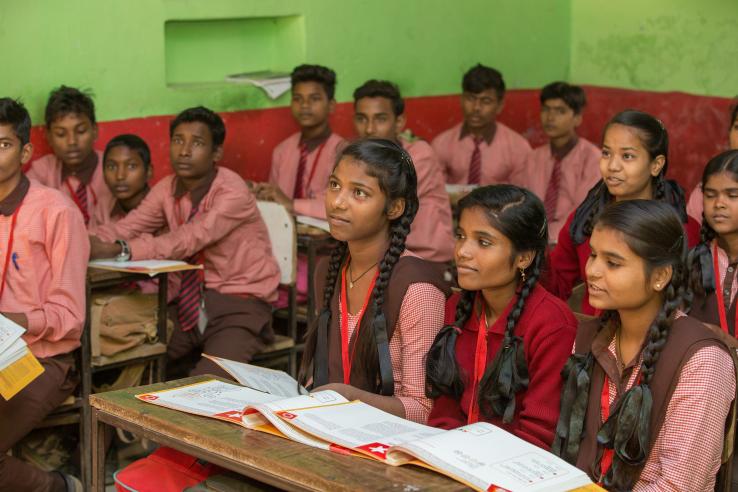
Affiliate Spotlight: Seema Jayachandran

To read the full profile, please download the PDF.
Seema Jayachandran is a Professor of Economics at Northwestern University. Seema currently serves on J-PAL's board of directors and is the chair of J-PAL's gender sector. Her research focuses on economic issues in low- and middle-income countries that persist in spite of overall economic growth, including environmental degradation and gender inequality. Her work also spans the breadth of labor markets, health, and education.
Seema Jayachandran and her research partners aim to uncover solutions to chronic social and environmental problems, ranging from deforestation to systemic gender inequality, that persist in spite of overall economic growth.
“Absent policy, gender inequality might get worse over time rather than better,” Seema explains. “The same could be said of many aspects of environmental degradation; we can’t rely on economic growth to solve them.”
Seema’s research on gender inequality focuses on widespread social practices in low- and middle-income countries that perpetuate discrimination against women and girls. These practices—from families’ preferential treatment of sons over daughters and sex-selective abortions to societal expectations that restrict women from working outside the home—take the form of deeply entrenched social norms that have far-reaching consequences for the lives of women and girls.
To address these often invisible societal forces, Seema’s work targets inequality at its root: by engaging with processes like attitude- and stereotype-formation that underlie prevailing gender norms.
In 2013, Seema and co-authors partnered with the NGO Breakthrough to evaluate the impact of a school-based gender equity curriculum on adolescents’ gender attitudes in Haryana, India. The randomized evaluation included interactive classroom discussions on gender equality that challenged both adolescent girls’ and boys’ biased perceptions regarding girls’ education and women’s work. Held over two and a half years, the curriculum succeeded in leading students to express more progressive gender attitudes. The program also led to behavioral changes, particularly among boys, who reported performing more household chores.
The study in Haryana showed that adolescents’ attitudes towards gender equality can be changed, especially when targeted at an age when they are still forming opinions. In early 2021, the curriculum was adopted by public schools across Punjab, India in response to these results and will be rolled out to 600,000 students in Grades 6 to 8 in the state.
A self-described “latecomer” to the field of economics, Seema began her journey in an unexpected way: as a theoretical physicist. After realizing that her interests lay at the intersection of quantitative analysis and issues closer to earth that impact society and people, she made the switch to economics. Her pivot to development economics, however, came later.
“I started out my graduate studies expecting to become a labor economist, focused on the United States. My interest in development economics was sparked by taking a development economics course in my first year, taught by Abhijit Banerjee, Esther Duflo, and Michael Kremer.”
Looking back, she finds valuable insight from her early career dilemma.
“A distinction I’ve since come to appreciate is between how much you like consuming knowledge in a field versus producing it,” she says. “It turns out that I enjoy doing research in economics more than in physics.”
To students faced with similar career decisions, she emphasizes that a practical view is often more telling than grand, existential questions: “Think about how you like spending your days—what kind of job is going to energize your day-to-day life?”


